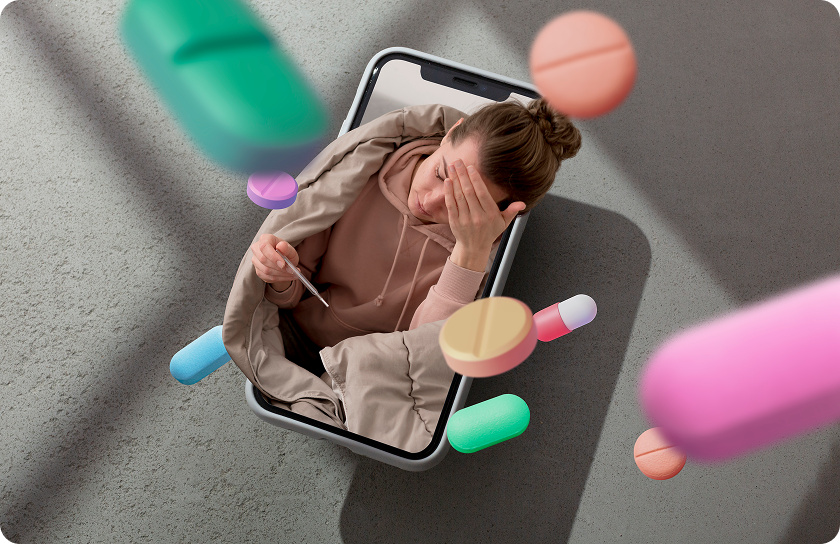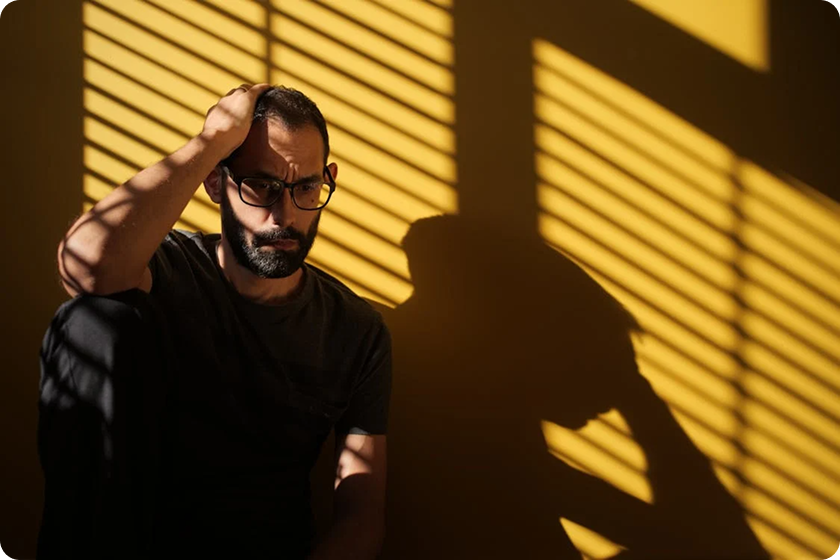Introduction: Why a Digital Detox Matters in Today’s World
The idea of a digital detox has become a lifeline for people looking for tech balance and mental wellness in a time when screens rule our everyday lives. We can get exhausted, preoccupied, and disengaged from the present moment due to technological overload, which includes incessant notifications and the allure of social media. You’re not alone if you’ve ever been distracted by your phone’s buzzing or found it difficult to concentrate due to internet distractions. According to studies, the average person uses screens for more than seven hours per day, which lowers productivity and causes stress and worry. Regaining your time, improving your focus, and rediscovering your digital well-being are all possible with a digital detox.

This digital detox guide will explain the need to disconnect, how to undertake a digital detox successfully, and doable strategies to cut down on screen usage. This post offers practical advice, real-world examples, and professional insights to help you regain your time and mental clarity, whether you’re struggling with computer addiction or just want to set boundaries with technology.
What Is a Digital Detox and Why Do You Need It?
The deliberate act of disconnecting from digital gadgets, including computers, tablets, cellphones, and even televisions, in order to lessen technological overload and promote mental clarity is known as a “digital detox.” Finding a tech balance to enhance your mental and emotional well-being is more important than completely giving up technology.

The Impact of Technology Overload
A study conducted by Reviews.org in 2023 discovered that the typical American checks their phone 144 times daily. Constant connectivity can hinder focus, disrupt sleep patterns and fuel digital addiction. Since excessive screen time is linked to elevated levels of stress, anxiety, and even depression, reducing screen time is crucial for digital well-being. One effective approach to enjoy the benefits of a digital detox, such as improved relationships, heightened productivity, and better mood, is to limit device usage or take a hiatus from social media.
Why a Digital Detox Matters
A digital detox isn’t just a trendy buzzword—it’s a necessity for mental wellness. Here’s why:
Reduces Stress:
Constant notifications and information overload trigger cortisol spikes, leaving you stressed. Unplugging allows your brain to rest.
Boosts Focus:
Digital minimalism helps you concentrate on tasks without the pull of online distractions.
Enhances Sleep:
Exposure to blue light from devices interferes with melatonin synthesis, which in turn impacts the quality of sleep.
Strengthens Relationships:
Screen-free time encourages meaningful in-person connections.
By managing technology overload, you can create space for mindful technology use and rediscover joy in the offline world.
How to Do a Digital Detox: A Step-by-Step Guide
Starting a digital detox can feel overwhelming, particularly if you depend on technology for your job or social life. Nevertheless, by establishing a well-defined plan and setting achievable objectives, it’s possible to create a digital detox strategy. Here’s a straightforward guide to help anyone navigate a digital detox.

Step 1: Assess Your Tech Habits
Before you start unplugging, take stock of your digital habits. Track how much time you spend on devices and identify triggers for excessive use. Apps like Moment or Screen Time (built into iOS and Android) can help you monitor usage and pinpoint areas for screen time reduction.
Ask Yourself:
Which apps or devices consume most of my time? Am I distracted by social media breaks or work emails?
Pro Tip:
Write down your screen time for a week to identify patterns. This data will guide your digital detox plan.
Step 2: Set Clear Goals for Your Digital Detox
Define what you want to achieve with your digital detox. Are you aiming for mental clarity, better productivity, or simply less tech addiction? Clear goals keep you motivated. For example:
- Limit social media to 30 minutes a day.
- Take a social media break for a weekend.
- Create screen-free time during meals or before bed.
Step 3: Create Technology Boundaries
Establishing technology limits is crucial for effective digital detoxification. Implement clear guidelines, such as:
- Avoid using screens for an hour prior to bedtime to enhance sleep quality.
- Create designated areas free from screens, such as the dining room or bedroom.
- Disable unnecessary notifications to reduce online interruptions.
Step 4: Start Small with a Digital Detox Plan
If diving into a complete digital detox seems daunting, start with manageable steps. Consider these beginner-friendly digital detox suggestions:
- Try a one-day unplugged challenge during the weekend.
- Restrict your use of a single app (like Instagram) for one week to embrace digital minimalism.
Step 5: Replace Screen Time with Meaningful Activities
A digital detox is most beneficial when you replace screen time with activities that enhance mental well-being. Explore the following options:
- Hobbies: Engage in painting, gardening, or journaling to ignite your creativity.
- Exercise: Engaging in physical activity elevates your mood and lowers stress levels.
- Mindfulness: Incorporate meditation or yoga practices for mindfulness, both online and offline.
Step 6: Evaluate and Adjust
After your digital detox, reflect on what worked and what didn’t. Did reducing screen time effectively improve your focus? Did unplugging help you feel more present? Adjust your digital detox plan based on your experience to maintain tech balance long-term.
The Benefits of Digital Detox: Why It’s Worth the Effort
By committing to unplugging, you can transform your mental, emotional, and physical health. Here are some key advantages:

1. Improved Mental Wellness
Constant exposure to screens can overwhelm your brain, leading to anxiety and burnout. A digital detox for mental health allows your mind to rest, reducing stress and promoting mental clarity. A 2022 study by the American Psychological Association found that participants who reduced screen time by just 1 hour daily reported a 20% decrease in anxiety symptoms.
2. Enhanced Productivity
Online distractions like social media or email notifications can derail your focus. Improving focus with a digital detox helps you prioritize tasks and work more efficiently. For example, writer Sarah, a 32-year-old freelancer, found that a weekend unplug challenge doubled her writing output by eliminating tech addiction.
3. Better Sleep Quality
Exposure to blue light from devices inhibits melatonin production, which can impede your ability to fall asleep. Implementing a digital detox strategy that involves screen-free periods leading up to bedtime can enhance sleep quality and help you wake up rejuvenated. A study conducted by the Sleep Foundation in 2021 found that individuals who steered clear of screens for two hours before sleeping fell asleep 30 minutes more quickly.
4. Stronger Relationships
Excessive screen time often pulls us away from loved ones. A digital detox encourages screen-free time for meaningful conversations and bonding. For instance, families who implement technology boundaries during meals report stronger connections and better communication.
5. Greater Self-Awareness
By stepping away from online distractions, you gain clarity about what truly matters, whether it’s pursuing a hobby or spending time with family.
Table: Digital Detox Strategies and Their Benefits
| Strategy | Description | Key Benefit | Time Commitment |
|---|---|---|---|
| 24-Hour Unplug Challenge | Avoid all screens for a full day. | Boosts mental clarity and reduces stress. | 1 day |
| Social Media Break | Promotes digital well-being and focus. | Reduces tech addiction and saves time. | 1–7 days |
| Screen-Free Time Zones | Designate areas (e.g., bedroom, dining room) as device-free spaces. | Promotes digital wellbeing and focus. | Ongoing |
| Notification Management | Turn off non-essential notifications to minimize distractions. | Enhances productivity and tech balance. | Ongoing |
| Evening Screen Curfew | Avoid screens 1–2 hours before bed to improve sleep quality. | Improves sleep and mental wellness. | Daily |
This table outlines practical digital detox strategies, their benefits, and how much time they require. Use it as a quick reference to start reducing screen time effectively.
Digital Detox Tips for Beginners: Practical Steps to Get Started
If you’re new to digital detox, don’t worry—starting small can lead to big results. Here are some beginner-friendly tips for managing technology overload and embracing digital minimalism:

- Try a 1-hour unplug challenge during the day. Use this time for a walk, reading, or meditating.
- Activate airplane mode during focused work or family time to create technology boundaries.
- Plan screen-free time for activities like journaling or cooking to promote mindful technology use.
For example, Emily, a 28-year-old teacher, started her digital detox by limiting Instagram to 20 minutes a day. Within a week, she noticed improved focus and less anxiety, proving that small steps can lead to meaningful digital balance.
Overcoming Challenges in Your Digital Detox Journey
While digital detox is rewarding, it’s not without challenges. Here’s how to address common obstacles:

Fear of Missing Out (FOMO)
Social media often fuels FOMO, making it hard to take a social media break. Remind yourself that unplugging doesn’t mean missing out—it means prioritizing mental wellness. Try notifying friends or colleagues about your digital detox to manage expectations.
Work-Related Tech Dependence
If your job requires constant connectivity, creating a digital detox plan can feel impossible. Instead, focus on technology boundaries outside work hours, like turning off email notifications after 6 PM or using screen-free time on weekends.
Habitual Phone Checking
Breaking the habit of checking your phone requires conscious effort. Place your phone in another room during meals or use a physical barrier, like a drawer, to reduce online distractions.
Lack of Motivation
If you struggle to stay committed, remind yourself of the benefits of digital detox. Track your progress, like hours spent offline or tasks completed, to stay motivated.
FAQs About Digital Detox
1. How do I do a digital detox without disrupting my routine?
To do a digital detox without major disruption, start with small changes like setting screen-free time during meals or limiting one app. Use tools like app timers to enforce screen time reduction and gradually build technology boundaries that fit your lifestyle.
2. What are the benefits of a digital detox for mental health?
A digital detox for mental health reduces stress, improves focus, and promotes mental clarity. By unplugging from online distractions, you give your brain a break, which can lower anxiety and boost mood, as supported by a 2022 APA study.
3. How can I reduce screen time effectively?
Reducing screen time effectively involves setting clear goals, using app limits, and replacing screen time with offline activities. Try an unplug challenge or schedule screen-free time to build habits that support digital wellbeing.
4. What are some digital detox tips for beginners?
Beginners can start with a short social media break, turn off notifications, or set a nightly screen curfew. These small steps help you practice digital minimalism and build confidence in managing technology overload.
5. How does a digital detox improve productivity?
Improving focus with a digital detox eliminates online distractions, allowing you to concentrate on tasks. By creating a digital detox plan, you prioritize meaningful work, leading to a digital detox for better productivity.
Conclusion: Reclaim Your Time with a Digital Detox
A digital detox is more than a break from screens—it’s a powerful way to reclaim your time, boost mental wellness, and achieve tech balance. By unplugging from technology overload, you can reduce stress, improve focus, and strengthen relationships. Whether you’re taking a social media break or committing to screen-free time, the benefits of digital detox are within reach for everyone.

Start small with digital detox tips for beginners, like setting technology boundaries or trying an unplugged challenge. As you build habits for mindful technology use, you’ll discover a renewed sense of digital well-being and mental clarity. Ready to take the first step? Create your digital detox plan today and experience the freedom of a balanced, screen-light life.
Internal Links:
- Top 10 Anti-Inflammatory Foods to Eat in 2025
- Bird Flu 2025: Key Facts to Stay Safe & Aware
- Exercise & Fitness Guide 2025: Routines & Trends




